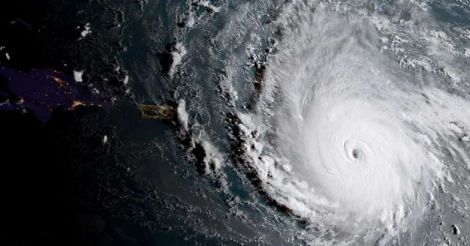Kochi: The cyclone 'Ockhi,' which triggered strong winds and heavy rain in the southern parts of Kerala and Tamil Nadu, is reportedly just 60km off the Thiruvananthapuram coast. If you wonder what's the meaning of the name 'Ockhi,' here is the answer – it means 'eye.' The name was given by Bangladesh.
How are cyclones named?
Cyclones were usually not named. The tradition started with hurricanes in the Atlantic Ocean, where tropical storms that reach sustained wind speeds of 39 miles per hour were given names. If a storm's wind speed reaches or crosses 74 mph, it is then classified as a hurricane/cyclone/typhoon. Tropical storms are given names and they retain the name if they develop into a cyclone/hurricane/typhoon.
Differences between hurricanes, typhoons and cyclones?
Actually, there is no difference. Hurricanes, typhoons, and cyclones are all the same. It's just different names given to tropical storms in different parts of the world – as hurricane in the Atlantic, typhoon in the Pacific and cyclone in the Indian Ocean.
Why such names?
Tropical cyclones are named to provide ease of communication between forecasters and the general public regarding forecasts, watches, and warnings. It's easier to remember a name, than a number or scientific terms.
Who gives the name?
The World Meteorological Organization (WMO) and the United Nations Economic and Social Commission for Asia and the Pacific (ESCAP) started the tropical cyclone naming system in 2000. The process of naming cyclones involves several countries in the region and is done under the aegis of the WMO. The Cyclones worldwide are named by 9 regions — North Atlantic, Eastern North Pacific, Central North Pacific, Western North Pacific, North Indian Ocean, South West Indian Ocean, Australian, Southern Pacific, South Atlantic.
For the Indian Ocean region, deliberations for naming cyclones began in 2000 and a formula was agreed upon in 2004. Eight countries in the region - Bangladesh, India, Maldives, Myanmar, Oman, Pakistan, Sri Lanka and Thailand - all contributed a set of names, which are assigned sequentially whenever a cyclonic storm develops.
The list of names India has added to the database includes Agni, Akash, Bijli, Jal (cyclones which have all occurred since 2004). The Indian names in the queue are Leher, Megh, Sagar and Vayu, while those suggested by Pakistan include Nilofar, Titli and Bulbul.
Cyclones in the North Indian Ocean basin are named by the Indian Meteorological Department and the first tropical cyclone was named in 2004 as Onil (given by Bangladesh).
What happens to the names of the storms that are very severe?
Names of some storms that cause widespread damage and deaths are usually retired and are not brought back or reused later, at least for 10 years. These names are then replaced with new names. The names are retired as a mark of respect to the dead.
What's the next name on the list?
The next cyclone will be named Sagar, a name given by India.

























